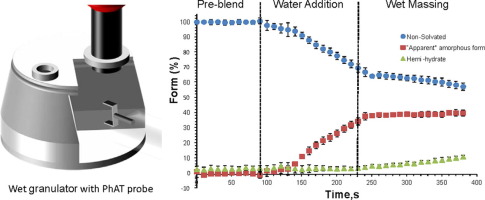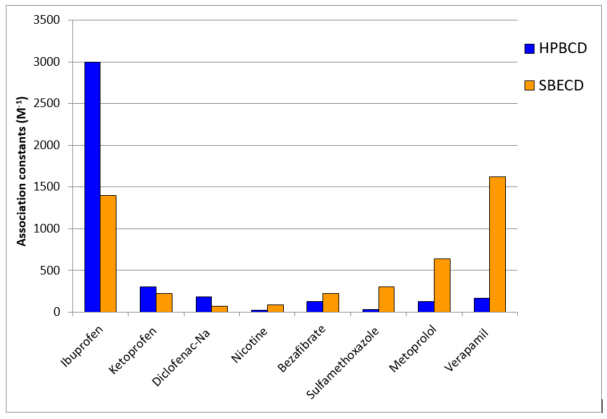- Home
- Blog
- News
- Basics
- Sources
- Agencies, Regulatory & Organisations
- CERSI Excipients Browser
- Excipient Report
- Excipient DMF List
- EXCiPACT Certified Companies
- Excipient Documentation
- Excipient EINECS Numbers
- Excipient E-Numbers
- FDA Inactive Ingredient List
- FDA GRAS Substances (SCOGS) Database
- IPEC Americas
- USP - U.S. Pharmacopeia
- Definitions
- Whitepapers / Publications
- Supplier
- Services
- Media
- Events
- 1st pharmaexcipients Poster Award
- Event Calendar
- Events featured by pharma-excipients
- 4th Annual Formulation & Drug Delivery Congress
- DDF Summit
- ExcipientFest Americas
- ExcipientFest Asia
- Global CompliancePanel
- International Conference and Exhibition on Pharmaceutics & Novel Drug Delivery Systems
- Formulation & Drug Delivery USA Congress
- Laboratory Medicine 2018
- Making Pharmaceuticals Europe
- Making Pharmaceuticals Exhibition
- Pharma Integrates
- PharmaExcipients China @CPhI China
- TTC Technology Training Center
- Jobs
- Online Sourcing
- Contact
02. March 2018
The oral cavity is frequently used to administer pharmaceutical drug products. This route of administration is seen as the most accessible for the majority of patients and supports an independent therapy management. For current oral dosage forms under development, the prediction of their unintended mucoadhesive properties and esophageal transit profiles would contribute for future administration safety, as concerns regarding unintended adhesion of solid oral dosage forms (SODF) during oro-esopha
01. March 2018
Most of antibacterial and antiviral agents and drugs for the treatment of central nervous system and cancer are water-insoluble, which reduces their bioavailability. The bioavailability of substances can be increased by using a dosage form such as nanosuspension.
01. March 2018
Form changes during drug product processing can be a risk to the final product quality in terms of chemical stability and bioavailability. In this study, online Raman spectroscopy was used to monitor the form changes in real time during high shear wet granulation of Compound A, a highly soluble drug present at a high drug load in an extended release formulation. The effect of water content, temperature, wet massing time and drying technique on the degree of drug transformation were examined.
28. February 2018
This study aimed to formulate a solid dosage form as decongestant for intranasal application. Nine formulations (A-K) based on gelatin and other polymers were manufactured following the solvent evaporation method. Fabricated patches were characterized according to uniformity of weight, thickness, transparency and surface pH, tensile strength and elongation at break. Adhesiveness was assessed by tack test and bioadhesive assay on the nasal porcine mucosa. Naphazoline was incorporated in the diffe
27. February 2018
Novel medicated straws were developed based on drug-loaded
electrospun fibers prepared by direct current electrospinning
(DCES) and high-speed electrospinning (HSES) of scaled-up
productivity. Good quality micro- and nanofibers were
electrospun using both techniques despite the multiple times
higher throughput rate of HSES based on the scanning electron
microscopic imaging (SEM). Solid state analyses revealed that
the poorly soluble model drug carvedilol (CAR) was dispersed
in an amorphous form
27. February 2018
Adhesives can be defined as social substances capable to join permanently to surfaces, by an adhesive process. This process involves two dissimilar bodies being held in intimate contact such that mechanical force or work can be transferred across the interface. Since their early discovery by the Egyptians—3300 years ago—intensive research efforts have been made with the purpose of obtaining high-quality, biocompatible adhesives.
26. February 2018
Nine common excipients were examined to determine their ability to cause disproportionation of the HCl salt of a a weakly basic compound. The goal was to determine which excipients were problematic and correlate the results to known properties such as surface pH, slurry pH, or molecular structure. Such a correlation enables a general, simple excipient selection process.
26. February 2018
A comparison of Hydroxypropyl and Sulfobutyl Betadex As a result of thorough development work, CycloLab Ltd (Budapest, Hungary) has established and validated the production of USP-complying Betadex Sulfobutyl Ether Sodium formulation excipient (SBECD, DexolveTM) in 2008. This cyclodextrin (CD) derivative is the main component of several commercial drug formulations worldwide acting as a solubility and stability enhancer. SBECD is one of the two parenterally applicable cyclodextrin derivatives...
26. February 2018
As an essential formulation component for large-scale tablet manufacturing, the lubricant preserves tooling by reducing die-wall friction. Unfortunately, lubrication also often results in adverse effects on tablet characteristics, such as prolonged disintegration, slowed dissolution, and reduced mechanical strength. Therefore, the choice of lubricant and its optimal concentration in a tablet formulation is a critical decision in tablet formulation development to attain low die-wall friction...
26. February 2018
The permeability of a powder bed reflects its particle size distribution, shape, packing, porosity, cohesivity, and tensile strength in a manner relevant to powder fluidization. The relationship between the permeability and the performance of carrier-based dry powder inhalation (DPI) mixtures has, however, aroused controversy. The current study sought to gain new insights into the relationship and to explore its potential applications. We studied eight lactose materials as DPI carriers. The...










